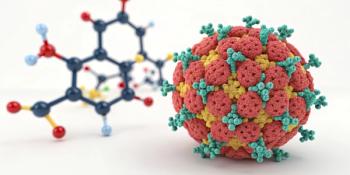
Gene Therapy for Hemophilia
Steven W. Pipe provided an overview of the gene therapy for hemophilia in this Managed Healthcare Executive K-cast.
In this Managed Healthcare Executive® K-cast,
Two types of hemophilia
Hemophilia A and hemophilia B are X-linked inherited bleeding disorders resulting from deficiency of the clotting factors — factors 8 and 9, respectively — explained Pipe. In their severe forms, these deficiencies result in risk of recurrent spontaneous and traumatic bleeding, primarily into joints. This ultimately leads to painful and debilitating chronic joint disease.
Hemophilia A is about four times more common than hemophilia B. But they are similar with respect to bleeding, outcomes and general approach to treatment, explained Pipe.
Standard of care for hemophilia B
Worldwide, there are approximately 33,000 people with hemophilia B, according to Pipe, and two-thirds are classified as having a moderate to severe deficiency of factor 9.
Prophylactic IV infusions of factor 9 replacement therapy are the current standard of care. The treatment aims to prevent bleeding because that will also prevent long-term adverse outcomes related to joint disease, Pipe said.
But “the infusions are a major treatment burden,” noted Pipe, “and they’re expensive.”
Multiple studies have shown that patients with hemophilia B had significantly higher healthcare resource use compared with matched controls, explained Pipe. The annual total healthcare costs for a person with hemophilia B is about 25-fold higher than the healthcare costs for matched controls, Pipe said.
First wave of gene therapy
Gene therapy holds the promise of achieving a steady state of the factors missing in hemophilia and producing a hemostatic effect sufficient to prevent bleeds without need for prophylactic infusions, Pipe said.
The first wave of gene therapies for hemophilia B involve packaging a functional copy of factor 9 gene inside a viral vector, he explained. Following a single outpatient IV infusion over as little as one to three hours, the viral particles containing the factor 9 gene are picked up by the liver cell receptors and taken into the cell. The vector particle uncoats and delivers the DNA to the nucleus of the cell. The genetic elements that accompany the gene allow for efficient expression and then secretion of factor 9 protein into the plasma.
No cancers seen
A new treatment strategy, such as gene therapy, is bound to have some unanswered questions, observed Pipe. The durability of the treatment is uncertain, he said, “although we do have long-term data from the phase 1 and 2 trials that are showing consistent durability at five, even 10, years.”
The adverse events have been tolerable for the most part, according to Pipe. Researchers and drug developers have not observed any cancers that can be linked to the gene treatments.
“If we look broadly across gene therapy as it’s been applied to hemophilia, there are probably more than
500 patients worldwide who’ve received gene therapy to date,” said Pipe. “The unknowns are there, but I think when they’re weighed in the balance against the other aspects of safety and efficacy, it will come out on top that this is a potentially transformational therapy.”
Payer concerns
Payers are likely to watch eligibility and exclusion criteria closely, Pipe noted. Only adults have been treated so far, and patients need to have good liver health because the gene therapy is putting genes into liver cells. Patients in the
phase 3 trials were compared with those receiving the prophylactic infusions that are the standard of care, according to Pipe, and it is possible that insurers will require patients to first be on prophylaxis treatment before agreeing to cover gene therapy. But, Pipe said, “gene therapy doesn’t need to be limited to people who have already been on prophylaxis.”
Around the world most patients with hemophilia B don’t have access to factor 9 replacement products and are not on regular prophylactic therapy, Pipe pointed out. They have significant complications from disease. “In that context,” he said, “gene therapy becomes a real game changer because you can do a single treatment event and the patients will, hopefully, no longer need any factor 9 replacement.”
What the future may hold
Pipe noted that the current gene therapies for hemophilia are limited to adults. “We need different approaches for gene therapy to impact the pediatric age group,” he said. Gene editing therapies that would not rely on viral vectors would be an advance, he said. Another promising area of research mentioned by Pipe is nonfactor replacement therapy that might be used to treat either hemophilia A or hemophilia B.
This content is a production of Managed Healthcare Executive®. Distribution of the K-Cast was supported by funding from CSL Behring LLC. CSL Behring LLC was not involved in the creation of the content of this production.
Newsletter
Get the latest industry news, event updates, and more from Managed healthcare Executive.


















































